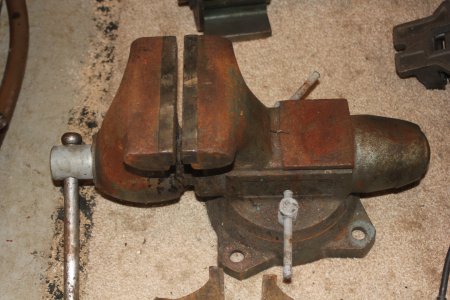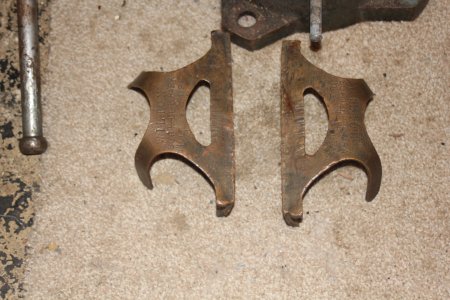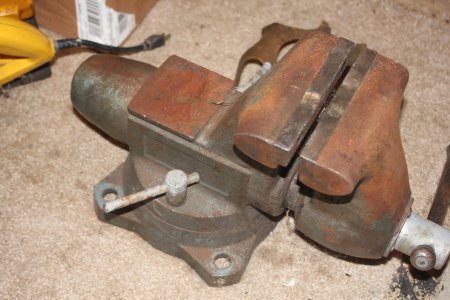We have some of the newer style bullets in the shop at work... the 'dust cap' on them appear to be part of the main casting, rather than a removeable piece.
Is that correct? Or is the joint between the casting and cap just filled with paint?
-Bear
The new style with the big dust cap is a fairly big change in how the vise is constructed. Around 1998 Wilton addressed the entire tail cap area as that was one of the weak spots of the original design. They used to have the tail cap which you see separated with the obvious line you mention. It was a male plug with a shoulder that fit into the body of the vise. The nut for the screw fit into that, pins went through the body, through the male part of the tail cap plug and into the tubular nut to hold things together. The small dust cap just popped in there to seal things.
The problem was that there wasn't much metal surrounding the pins in the dust cap plug...maybe 3/8" or so. The thinking was the pins only do anything when you're opening the vise, so they weren't heavily loaded...until you swing a hammer at something in the vise and miss, hitting the font jaw, or even more commonly drop the vise on the spindle when you're moving it. That would often crack the pin holes in the tail cap plug. If you see a Wilton with a gap between the body and the tail cap assembly that opens when you open the vise, and closes when you close the vise, it has cracked pin holes. I have a way to fix that, but it's fairly complicated and involves machining the tail cap plug, brazing an insert to it, putting the plug back in place under pressure and then drilling new holes...it's better than scrapping a vise, but a royal PITA to do.
The new design is a big improvement. They cast the tail end of the vise to a bigger OD (obvious from the pics) machined a deeper recess into the body and then made a much larger plug that fits entirely within the body so it has a lot of metal surrounding the pin holes. That big plug goes in, the nut goes into the plug, pins go through the body, plug and nut and then a big dust cap seals it all.
This is one of those rare cases where a new tool is really better than the old versions. A new Wilton is simply made better than the earlier ones, especially those made during the Chicago era that guys fight over. I love the looks of the Chicago Wiltons, but have found so many obvious mistakes and problems with them that they left the factory with that there simply isn't any comparison in quality. Castings offset so they aren't centered on the base, front and rear jaw towers unequal heights, jaw holes drilled in the wrong place, etc....all kinds of things that should never have gone out the door. Some of it was how they made them and I suspect automated machinery fixed most of the problems as time went by.





